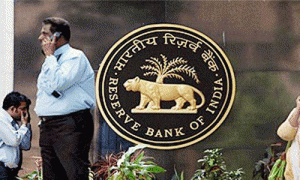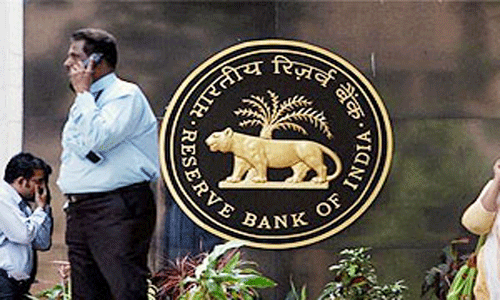By: Ravi Sinha
 Track2Realty Exclusive: A marginal rate cut/hike time again evokes reactions across the industries and the blame game continues where the Reserve Bank of India (RBI) defends its balancing act of controlling inflation and the industry captains slam its short term outlook of stop gap arrangement.
Track2Realty Exclusive: A marginal rate cut/hike time again evokes reactions across the industries and the blame game continues where the Reserve Bank of India (RBI) defends its balancing act of controlling inflation and the industry captains slam its short term outlook of stop gap arrangement.
However, the dilemma of the real estate sector is more complex as it affects the sector directly with the cost of lending and indirectly affects the buyers’ psyche. In a macro economic scenario, the RBI is conscious of the fact that any effect on the realty has a chain affect on around 250 other industries in the backward and forward linkages.
Problem with marginal rate cut is that while it adds to the buyers’ expectations of cheaper home loans but ends up in damp squib. It is here that the realty sector does not minces word to vehemently criticise the RBI’s myopic vision of managing the shortages, whereas the sector wants free flow of money at easy rate to create surplus in a country where the housing shortage is around 24 million as per the government assessment. McKinsey finds this housing shortage even higher at 26 million.
The moot point is when the marginal rate cut does not make any significant impact on the fortunes of the sector, why the industry bodies are not engaging with the government for a long-term and viable policy advocacy? Moreover, even before the RBI announced its rate cut, why was there euphoria on the Dalal Street where Realty Index was continuously moving forward? Does not it reflect a high level of expectations for the sector? Has the sector and the home buyers been cheated this time around?
CREDAI National President Lalit Jain exudes a sense of being cheated when he admits that judging by the Ministry of Housing’s pragmatic approach towards to the real estate industry, the developer community was hopeful that the RBI too will soften its stand and help the sector revive. But the continued stubborn approach of RBI is shocking.
“The mid-quarter monetary policy is by and large uneventful since it does not take into consideration of the real estate sector that contributes handsomely to the GDP. One would have expected RBI to be realistic and appreciate the fact the real estate industry supports hundreds of other industries and hence plays a major role in rejuvenating the economy hit by job losses and dwindling investments. RBI should take steps to ease funding for real estate at much lower rates of interest in the interest of millions of home seekers and ease CRR as well, says Jain.
By and large there is feeling in the sector that risking inflation for growth is the right economic policy. Inflation could well be curbed by giving a big boost to production and flooding market with supplies. It is not a prudent policy to risk anarchy through a tight monetary policy.
Paras Gundecha, President, MCHI-CREDAI echoes the same concerns when he says that the expectations was for a cut in CRR as well to leave room for commercial banks and home loan companies to fund home buyers at affordable rates of interest.
“Cash crunch is one of the biggest problems being faced by the real estate sector in particular and the economy in general,” he pointed out and said the central bank should go in for immediate financial reforms for the real estate sector and help developers and home buyers get over the current crisis created by high cost of funding, apart from rising prices of inputs,” says Gundecha.
Anshuman Magazine, Chairman & MD, CBRE South Asia says by reducing the repo rate marginally, the RBI is showing its willingness to support growth. However, this is not going to reduce interest rates meaningfully in the short term. Therefore this move will not have any immediate impact on the real estate market for which steps need to be taken to increase liquidity.
Cushman & Wakefield (C&W) said the apex bank has taken the right step to boost economic growth through reductions in key interest rates, although the reduction of 25 basis points is a small one.
“If this rate cut also translates in further lowering of loan interest rates by banks for businesses and for home buying consumers, then we can definitely expect to see some momentum in a slow and anxious real estate market that was left largely disappointed by the Union Budget,” C&W Executive Managing Director (South Asia) Sanjay Dutt said.
Pankaj Bansal, Director, M3M India also welcomes the move saying a 25 basis point cut in key policy rates is a welcome move from Reserve Bank, indicating that monetary policy is moving towards growth. This will allow home buyers to get loans at affordable rates and help clear the real estate inventory.
“In such scenario real estate sector can expect equity inflow for the projects having good earning potential. A further reduction expectation will give encouraging outlook to the economy and we can expect more inflow towards equity market as well. We would like to see further cuts in policy rates to boost investors’ sentiment,” says Bansal.
According to Brijesh Bhanote, Director Sales and Marketing, The 3C Company the repo rate cut by 25 basis points is a welcome move by RBI. Since the beginning of year the second time repo cut clearly indicates the concerns of central bank to support the revival progression of Indian economy and to narrow the fiscal deficit. While the unchanged CRR might keep the food inflation high, but reduced repo rate from 7.75 % to 7.5 % will definitely boost the growth of macroeconomics.
Abhishek Kapoor, CEO, Rustomjee Urbania tries to rationalise the ‘welcome move’ euphoria when he says the reduction in repo rate cut by 25 basis points to 7.50% is a welcome move, but we hope that banks pass this benefit to the end consumers. Even though RBI seems to have acted a bit late in easing the grip on liquidity, the successive rate cuts shall certainly push sentiments across manufacturing sector and real estate sector which have been impacted in the last few quarters.
“This move will stir more liquidity providing relief for the real-estate sector. Also, the revision in rates will positively impact customers and investors as it will allow them to take a fresh look at their property purchases with an improved liquidity and reduced interest burden.” Says Kapoor.
The sector may react over the RBI’s efforts to manage the shortages, rate cut or no rate cut, but the larger issue lies in the reforms that could ease the source of funding for the sector, smooth the procedural chain of delays and make home loans more rationalised, if not cheaper in a fancy & wishful way. Reforms will also lead to reduced cost of funding and other additional escalation borne out of delays coming down and this will have a snowball effect in creating surplus housing.
Conventional wisdom of economics suggests managing the shortage is a short term approach, while creating the surplus is the way to move the sustainable economy ahead. Once that happens, minor rate cut or hike will not create this much of hue and cry by one and all.





